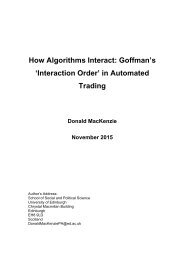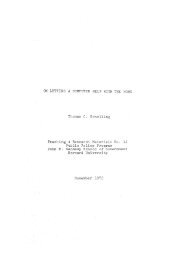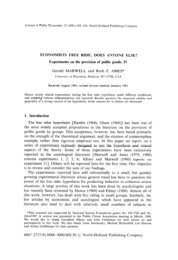n3-al-mukhatabat-journal
n3-al-mukhatabat-journal
n3-al-mukhatabat-journal
Create successful ePaper yourself
Turn your PDF publications into a flip-book with our unique Google optimized e-Paper software.
These basic concepts represent what Ronland Giere c<strong>al</strong>ls 'principles'. In his<br />
view, the function of such principles is to act as gener<strong>al</strong> templates for the<br />
construction of more specific abstract objects that is c<strong>al</strong>led “models.” (Giere:<br />
745). In addition, the same holds for the term law. What is commonly c<strong>al</strong>led<br />
Newton’s second law of motion, for example, is for him a centr<strong>al</strong> principle of<br />
classic<strong>al</strong> mechanics (Giere: 746).<br />
Consequently, he adds, the relations between such principles and models are<br />
such that models should be abstract objects constructed in conformity with<br />
appropriate gener<strong>al</strong> principles and specific conditions. What is speci<strong>al</strong> about<br />
models is that they are designed so that elements of the model can be identified<br />
with features of the re<strong>al</strong> world. This is what makes it possible to use models to<br />
represent aspects of the world (Giere: 747).<br />
With such understanding, what are the virtues of the credible model? What<br />
makes a specific model better than another? Within their view of models as tools<br />
for surrogative reasoning, Rodríguez and Bonilla propose that the main use of<br />
models is in helping us to draw inferences from the system they represent.<br />
According to their inferenti<strong>al</strong> approach, they introduce the following properties<br />
that constitute what we may c<strong>al</strong>l the basic model’s virtues:<br />
• Its ‘‘size’’<br />
• Its coherence<br />
• Its manageability<br />
• Its heuristic capacity to produce new and more reliable models. (Rodríguez<br />
and Bonilla: 108).<br />
Thus, one of the basic virtues of a model is its size, which means that the wider<br />
the domain of the model, the more credible it is. However, it should <strong>al</strong>so fulfill<br />
other virtues, especi<strong>al</strong>ly, coherence and manageability, which makes it difficult<br />
to construct a model that covers both natur<strong>al</strong> and human sciences in an efficient<br />
way, <strong>al</strong>beit this is not an impossible task.<br />
V. The Mechanistic Model<br />
Keeping in mind such a gener<strong>al</strong> view of the concept of 'model of nature', there<br />
are sever<strong>al</strong> types of 'scientific' models of nature that are introduced <strong>al</strong>ong the<br />
history of human thought. In gener<strong>al</strong>, these models can be classified into:<br />
mechanic<strong>al</strong>, teleologic<strong>al</strong>, process, organic, and Complex, in addition to the<br />
AL-MUKHATABAT Numéro 03 Année 01/2012 لىولأا ةن سلا 30 ددعلا تابطانا<br />
117<br />
ISSN: 1737-6432







